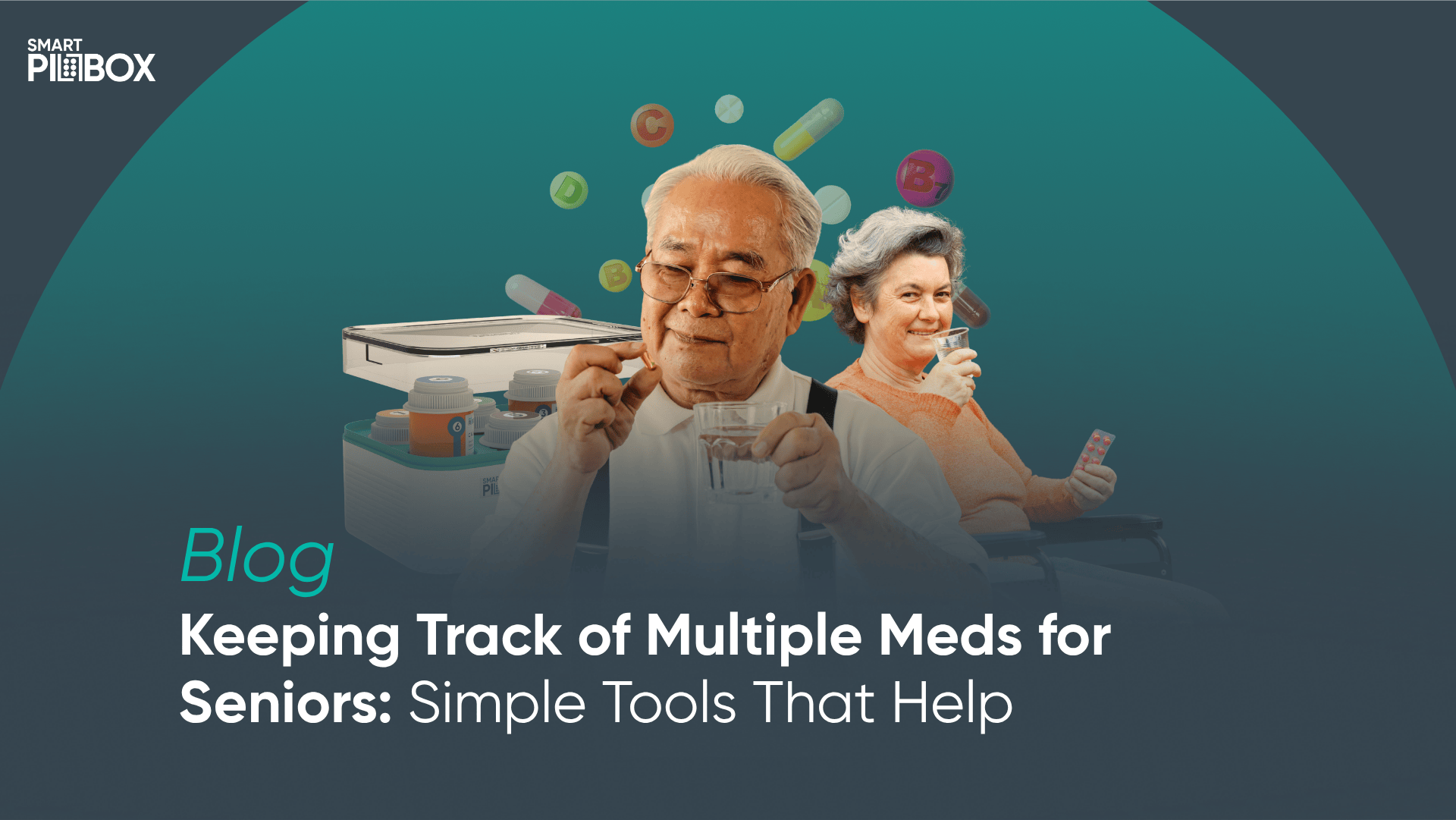The Role of Smart Pill Caps in Combating the Opioid Crisis

Walk into any American community today and you will find someone who has been touched by the opioid crisis. Maybe it is a neighbor who lost a family member to an overdose, or a friend who is quietly battling dependency. Perhaps it is a parent who worries every time their child is prescribed painkillers after surgery. The opioid epidemic is no longer something distant or hidden. It is real, it is here, and it continues to take lives every single day.
Behind the headlines and statistics lies a simple but powerful truth: managing opioids safely comes down to accountability and visibility. Patients need support to take medications exactly as prescribed, and providers need better tools to ensure adherence. This is where Smart Pill Caps for Opioid Crisis are starting to change the story.
These devices may look like an ordinary cap, but they are designed with advanced features that track and monitor medication use in real time. For families, providers, and regulators, smart pill caps could be the breakthrough technology that reshapes how opioids are managed in the United States.
Why Opioid Misuse Has Become So Widespread
The opioid crisis is fueled by multiple forces. On one hand, patients genuinely need pain relief. On the other hand, the very medications that provide relief can create dependency when misused. Non-adherence plays a bigger role than many realize.
When patients take too much, too little, or stop suddenly, they increase their risks of dependency, withdrawal, or overdose. Medication non-adherence and opioid overdoses are deeply connected, yet clinics often struggle to detect misuse until it is too late.
Traditional methods like pill counts or urine tests do not provide the full picture. They tell providers what happened days or weeks later, not what is happening in real time. And when it comes to controlled substances, delayed insights can be dangerous.
Where Technology Fits In
This is the space where innovation has become not just useful but necessary. By using smart pill caps for medication adherence, healthcare providers can finally see beyond assumptions and guesswork. These devices record every opening of the bottle, time-stamp the action, and in some cases even send alerts when patterns suggest misuse.
This type of visibility creates a safety net. Families know their loved ones are being monitored. Providers gain confidence that prescriptions are being followed. Regulators see that practices are using opioid prescription monitoring technology responsibly.
How Smart Pill Caps Actually Work
The beauty of smart pill caps is that they combine simplicity with sophistication. Here is how they fit into the patient care journey:
- Digital adherence tools for pain management
Each cap connects to a secure app or dashboard, creating a real-time log of every dose taken. This data becomes a living record of adherence, one that patients and providers can review together. - Pill cap devices for controlled substances
These devices are designed with opioids in mind. They track when the bottle is opened, how often, and whether usage aligns with the prescribed plan. - Remote monitoring of opioid usage
For patients who live far from clinics, remote oversight is critical. Smart pill caps allow providers to see usage data without requiring constant in-person visits. - Real-time medication tracking systems
Instead of waiting weeks for lab results, providers can get instant updates. If a patient misses doses or takes them too frequently, alerts can be triggered right away.
Why Clinics and Pharmacies Should Care
The opioid epidemic is not just a patient-level problem. It places enormous pressure on healthcare systems, pharmacies, and regulatory bodies. Smart pill caps offer solutions across multiple fronts.
- Pharmacy tech tools for opioid safety
Pharmacies can use smart caps as part of their dispensing process, adding a protective layer between prescribing and consumption. - Regulatory compliance for opioid dispensing tech
With increasing scrutiny from state and federal agencies, clinics that adopt digital tracking tools demonstrate proactive compliance. Documentation from these devices can protect providers during audits or investigations. - Healthcare provider tools for opioid adherence
Doctors and nurses gain access to reliable data. Instead of relying on patient memory, they can make decisions based on real behavior. This allows for safer prescribing and more personalized care.
A Human Lens: What Patients and Families Experience
Behind every chart and data point is a real person. Imagine a father recovering from back surgery who has been given opioids for short-term pain. His wife worries about dependency, but she cannot monitor him every moment. With a smart pill cap, she gains peace of mind because the data shows he is staying on track.
Or think of a young adult struggling with pain from a chronic condition. Their parents want to trust them but fear misuse. Controlled substance tracking devices provide accountability without constant confrontation.
This technology is not just about numbers. It is about relationships. It builds trust between patients, families, and providers by replacing suspicion with transparency.
The Link to Broader Safety
Every case of non-adherence that goes undetected has the potential to ripple outward. An unused pill bottle can be stolen or sold. An overdose can devastate a family and overwhelm local emergency services. A misuse pattern in one clinic can attract regulatory scrutiny that affects dozens of patients.
By introducing patient safety and prescription monitoring at the individual level, smart pill caps support community-level safety too. The technology acts like a guardrail, reducing risks before they escalate into tragedies.
What the Numbers Tell Us
Opioid statistics remain alarming. According to the CDC, nearly 80,000 people died from opioid overdoses in 2022 alone. The majority of these deaths were linked to non-adherence, misuse, or illicit fentanyl.
While smart pill caps cannot solve the crisis on their own, they represent an important tool in bending these numbers downward. If adherence improves even slightly, thousands of lives could potentially be saved.
Where Technology is Heading Next
The current generation of smart pill caps is already powerful, but the future looks even more promising. Imagine systems that integrate with electronic health records, alert providers directly when adherence breaks down, or even lock the bottle if misuse is detected.
As AI and data analytics advance, digital adherence tools for pain management will become more predictive, not just reactive. Instead of waiting for problems, providers will be able to anticipate them.
Challenges and Questions
Of course, no technology is perfect. Privacy concerns are real, especially when monitoring involves sensitive medications. Patients must trust that their data is secure. Providers must balance oversight with respect for patient autonomy.
There are also questions of cost and access. Will all clinics be able to afford this technology? Will insurance companies cover it? For smart pill caps to truly transform pain management, adoption must be broad, not limited to a few well-funded practices.
Why Adoption Still Makes Sense
Despite these challenges, the benefits far outweigh the concerns. Consider the alternatives: relying on inconsistent self-reports, dealing with mounting overdose numbers, and facing increasing regulatory pressure.
Smart pill caps give providers a way to show they are taking the crisis seriously. They give families a way to feel safe. They give patients a way to stay accountable without constant policing. And they give regulators confidence that clinics are adopting healthcare provider tools for opioid adherence proactively.
The Bigger Picture
The opioid epidemic will not be solved by any single intervention. It requires education, community outreach, safer prescribing, and strong policies. But within that larger effort, technology like smart pill caps plays a critical role.
By making real-time medication tracking systems a standard part of care, the healthcare system can finally address one of the crisis’s most stubborn problems: the gap between prescriptions written and prescriptions taken responsibly.
Conclusion
The opioid crisis has taken too much already. Families are grieving, providers are overwhelmed, and regulators are searching for solutions. But hope exists in innovation.
Smart pill caps for medication adherence are more than just gadgets. They are part of a movement to make opioids safer, to give providers better tools, and to bring peace of mind back to families. From pill cap devices for controlled substances to remote monitoring of opioid usage, these technologies provide accountability, safety, and compliance in ways traditional methods never could.
For pharmacies, they represent pharmacy tech tools for opioid safety. For clinics, they provide regulatory compliance for opioid dispensing tech. For patients, they ensure patient safety and prescription monitoring without judgment.
In a fight where every tool counts, Smart Pill Caps for Opioid Crisis may be one of the most promising solutions yet.


